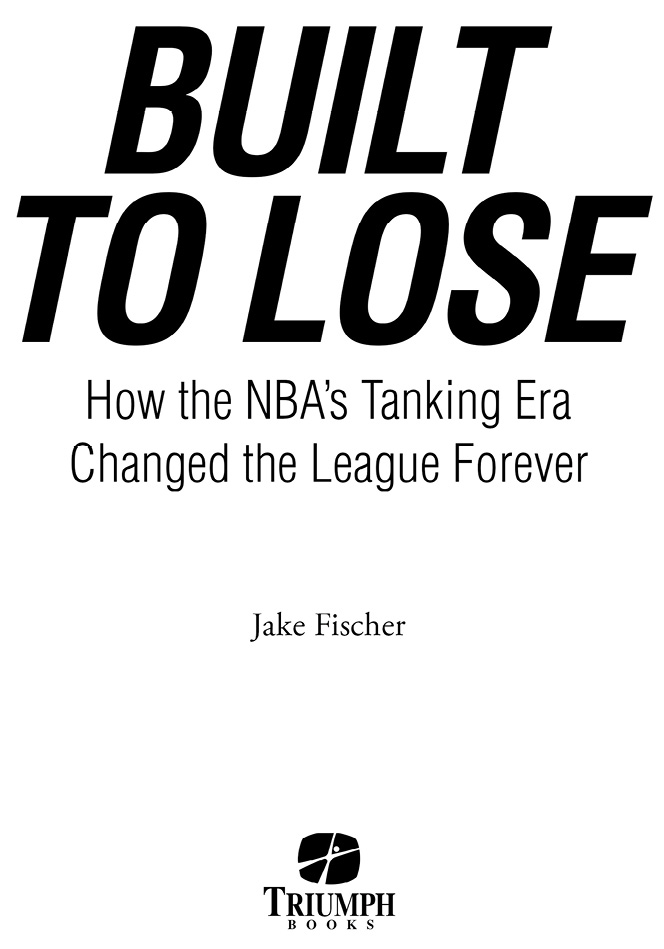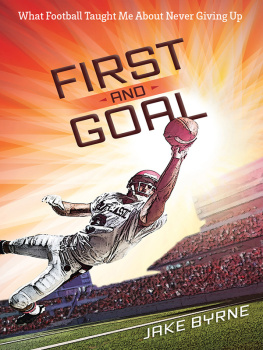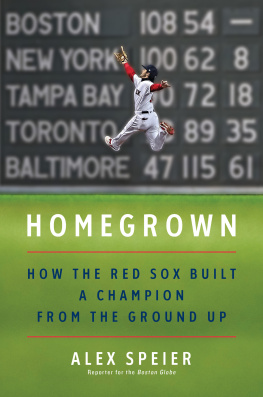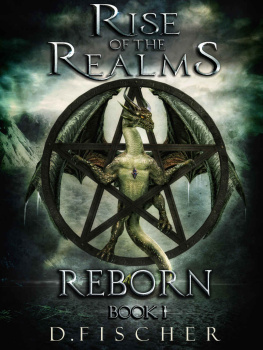
To Mrs. Crawford and Mr. Gagliardi
Contents
Introduction
In its heyday, the NBAs Orlando Pro Summer League was a gold mine for reporters. Unlike the lucrative carnival that, during the late 2010s, emerged in Las Vegas on the campus of UNLV, the Orlando Pro Summer League excluded fans from attendance. Just team personnel, agents, and credentialed media were allowed to attend. If you were there, you were at leastkind ofsomebody who needed to be there.
Roughly eight franchises would participate every July, but even a 19-year-old intern at SLAM magazine could wander around the bowels of the Amway Center and rub elbows with executives from any team. You were able to approach first-round picks who were just leaning against the wall, casually waiting for their game to start, like their team had next during a pickup run. Youd wind up, just accidentally, sharing a lunch table in the media room with team owners. You could sit courtside behind your laptop and be broadcast nationwide as a bona fide member of the basketball press. NBA Entertainment even micd me one yearto this day, I have no idea whyand we filmed a supposedly candid conversation about player scouting, theoretically mimicking the whispers that echoed all week throughout those back halls.
In 2013, two months or so into said internship at SLAM , I handed the new Philadelphia 76ers president of basketball operations, Sam Hinkie, a business card that Id made myself on VistaPrint. It was gawky and obviously unofficial. I had tried, and failed, to match the font listing my contact information to SLA M s masthead. But Hinkie accepted my amateur attempt at networking nonetheless. This was Orlando, after all. I was there. I was, at least kind of, somebody.
Philadelphia hired Hinkie that May. I remember learning the news via Twitter alert, sitting in my 2008 Honda CR-V and following NBA Twitters reaction on the screen of my iPhone 4s. If you recall, the s stood for Siri, which first introduced the now-widespread, voice-activated personal assistant to mobile devices. Blackberrys, suddenly, were no longer cool. These were the early days of being ridiculed for not having iMessage. If your texts showed green instead of blue, you were lame. And, perhaps not so coincidentally, a flavor of big tech had also started blending into the NBAs ecosystem.
The Sixers scooped Hinkie from the famously data-driven Houston Rockets, steered then by Daryl Morey, who was widely considered basketballs version of Billy Beanethe number-crunching executive who shrewdly built the Moneyball Oakland Athletics into a World Series contender, even on a hamstrung budget. Houston fully entrusted Morey to pilot its basketball operations in 2007. That same year, the soon-to-be Oklahoma City Thunder tapped analytics-minded Sam Presti as its own franchise leader.
The Rockets won. And won. Each season, Moreys teams seemed to push the limits of mathematical tactics, both in roster construction and in playing style. They shot more and more three-pointers, while many opponents still posted up giant centers on the block. Prestis regime, meanwhile, methodically drafted superstar after superstar, his young Thunder quickly reached the 2012 NBA Finals, and the wave of NBA analytics seemed to crash on shores across the league.
The Orlando Magic, soon after, hired Rob Hennigan from Prestis Thunder to serve as their chief basketball mind. The following year, as Philadelphia empowered Hinkie, Phoenix hired Ryan McDonough as the Suns new general manager. He was a respected talent evaluator from Bostons own analytically minded front office that first brought Morey himself into professional basketball. The Sacramento Kings named Pete DAlessandro their general manager, a numbers guru who was known for his mastery of the salary cap. These were not former players with an innate feel for the game. These men were, frankly, nerds rushing the NBAs storied fraternity of lifelong hoopers.
This was an unmistakable trend. And any trend in any industry sparks unforeseen ripple effects. When Apple eliminated headphone jacks from its cell phones, Bluetooth products blossomed in turn. When NBA clubs equipped these young, analytical acolytes, a new team-building theme emerged across the leagues landscape. The numbers were obvious: if your roster was average, and your record was mediocre, you had a near-impossible path toward a championship.
To make a long story short, Hennigan, Hinkie, and McDonough understood that losing, sinking down the standings, and earning higher lottery odds for landing top draft picks, was the surest way for a franchise to add superstar talent that could one day deliver a title. Boston set out to do the same that 201314 season. So while the NBA is ostensibly about competing for championships, a new race to the bottom grew maybe even more contested than the battle taking place at the top.
* * *
One year into Hinkies tenure, the mass of at-least-kind-of somebodies flocked back to Orlando. All season, skeptics had lamented the losing culture fostering in Philadelphia. Basketball lifers wondered, aghast, how the Sixers young players would learn about professionalism. Across the Delaware Valley, Hinkies strategy clearly polarized his franchises fanbase. Largely, it seemed younger supporters, fatigued by Phillys years of mediocrity, cheered Hinkies brazen scheme with abandon. Older Sixers fans were loudly complaining about the teams terrible nightly product. My father, a longtime season-ticket holder, abandoned his seats. And I was an aspiring sportswriter, with those VistaPrint business cards, so his friends demanded an explanation whenever we crossed paths. Theyd make fun of Hinkies spreadsheets and call him Scam Hinkie over pointed emails and Facebook messages.
This was why I reapproached Hinkie inside the Amway Center in July 2014. I had to actually meet this man. I needed to put a personality and a conversation to the caricature that many were painting him as. I also needed to give him one of the glossier, more-official-looking-but-still-unofficial SLAM business cards that I printed this time around, now no longer an intern, but still a 20-year-old Contributing Writer that was far more kind-of than somebody. So I asked Hinkie if he wanted to meet for a meal that week. He had absolutely no reason to say yes. But the executive, infamous for undercutting NBA tradition as we knew it, promptly invited me to dinner.
I followed him outside the arena and into the murky Florida rain. We speed-walked across the street and into a parking garage. His rental car for the week was a black Chevy Suburban. Country music played quietly on XM radio while I rode shotgun.
We ate and spoke in the lobby restaurant of Orlandos Grand Bohemian Hotel. He was as charming as he was guarded, insisting, as is his custom, the conversation remained off the record. But the 36-year-old before me that evening was nothing like the cold and calculated parody many believed him to be. He won me over. And as a young reporter, finding my footing in the cutthroat business of basketball, I certainly struggled to maintain an objectivity when discussing Hinkie and his process to build Philadelphia into a perennial contender.
Later that week, I bumped into Isiah Thomas in the Amway Center media room. We shared a few mutual acquaintances, so I struck up a conversation with him while waiting in the buffet line. Thomas was in Orlando to provide color commentary for NBA TVs game broadcasts. He, of course, was a decorated point guard and a two-time champion with the Detroit Pistons. Then Thomas became both a coach and served as a team executive. He was by all accounts Hinkies direct foil; he not only played but starred in the league. He wasnt a 30-something whiz kidhed been around the NBA for more than 30 years.













